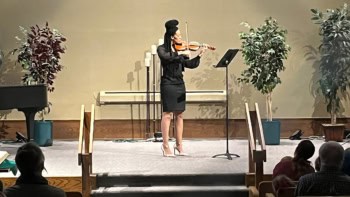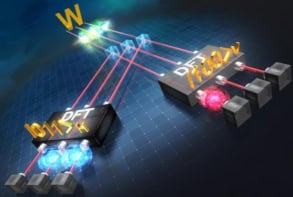An international team of researchers from the US, Denmark and the UK has successfully "teleported" the quantum state of a whole beam of light (Science 282 706). Previously only individual photons have been teleported.
In quantum teleportation the quantum state of an object held by “Alice” is instantaneously sent to “Bob”. The technique works by sending one half of an “entangled” light beam to Alice and the other to Bob. Alice measures the interaction of this beam with the beam she wants to teleport. She sends that information to Bob who uses it make an identical copy of the beam that Alice wanted to teleport. This original beam is lost in the progress.
In the experiment – performed by physicists from CalTech in the US, Aarhus University in Denmark and the University of Wales in Bangor – Alice used a 50/50 beam-splitter to combine the output of a titanium sapphire laser with her half of the entangled beam from an optical parametric oscillator. Alice then measured both outputs from the beam-splitter and transmitted the results to Bob. Bob was then able to use this information and his half of the entangled beam to create an exact copy of Alice’s original beam.
Previously only two-state quantum systems – such as the polarization of a photon – had been teleported. This new research should allow all quantum states to be teleported. “[This could] allow quantum systems to perform information-processing tasks that would be impossible in a classical world, ” according to Carlton Caves from the University of New Mexico.



